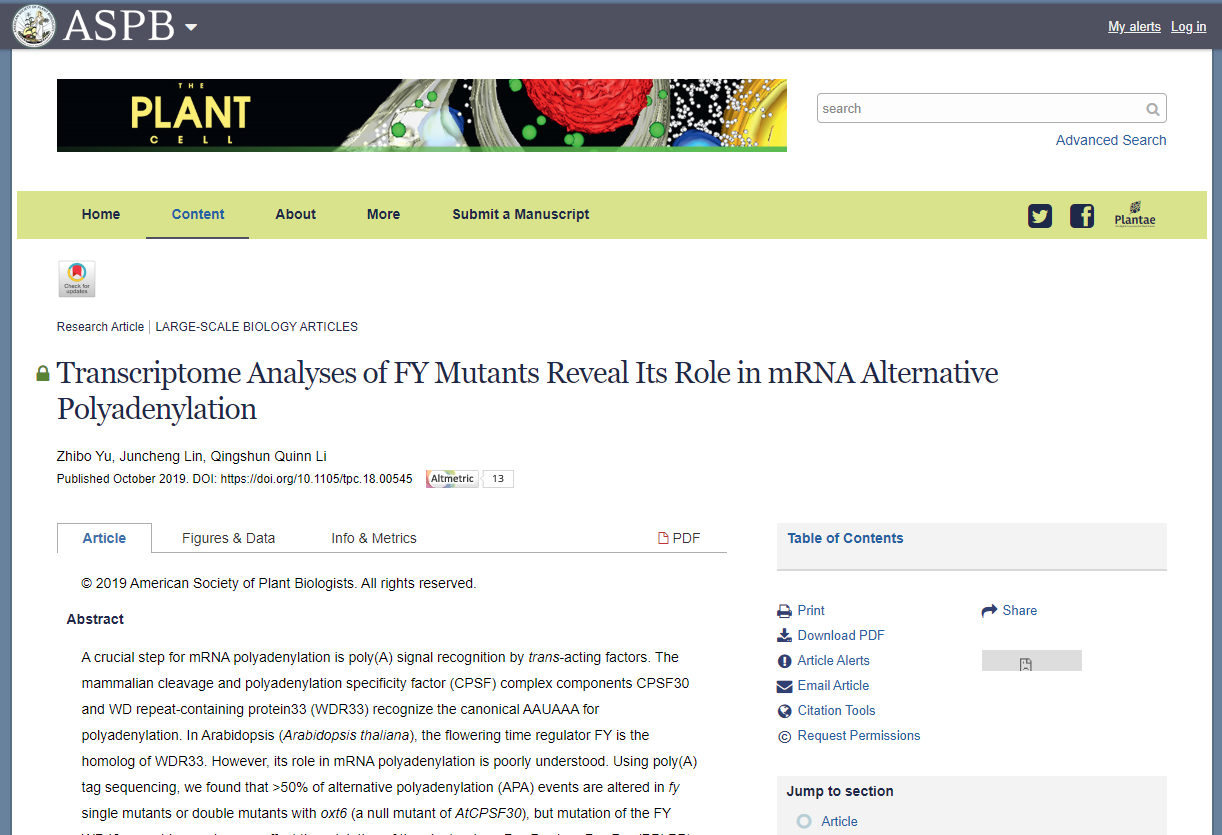Transcriptome analyses of FY mutants reveal its role in mRNA alternative polyadenylation
Zhibo Yu, Juncheng Lin, Qingshun Quinn Li
The Plant Cell DOI: https://doi.org/10.1105/tpc.18.00545
Published: October, 2019
Abstract
A crucial step for mRNA polyadenylation is poly(A) signal recognition by trans-acting factors. The mammalian cleavage and polyadenylation specificity factor (CPSF) complex components CPSF30 and WD repeat-containing protein33 (WDR33) recognize the canonical AAUAAA for polyadenylation. In Arabidopsis (Arabidopsis thaliana), the flowering time regulator FY is the homolog of WDR33. However, its role in mRNA polyadenylation is poorly understood. Using poly(A) tag sequencing, we found that >50% of alternative polyadenylation (APA) events are altered in fy single mutants or double mutants with oxt6 (a null mutant of AtCPSF30), but mutation of the FY WD40-repeat has a stronger effect than deletion of the plant-unique Pro-Pro-Leu-Pro-Pro (PPLPP) domain. fy mutations disrupt AAUAAA or AAUAAA-like poly(A) signal recognition. Notably, A-rich signal usage is suppressed in the WD40-repeat mutation but promoted in PPLPP-domain deficiency. However, fy mutations do not aggravate the altered signal usage in oxt6. Furthermore, the WD40-repeat mutation shows a preference for 3′ untranslated region shortening, but the PPLPP-domain deficiency shows a preference for lengthening. Interestingly, the WD40-repeat mutant exhibits shortened primary roots and late flowering with alteration of APA of related genes. Importantly, the long transcripts of two APA genes affected in fy are related to abiotic stress responses. These results reveal a conserved and specific role of FY in mRNA polyadenylation.
Full text: http://www.plantcell.org/content/31/10/2332.long
